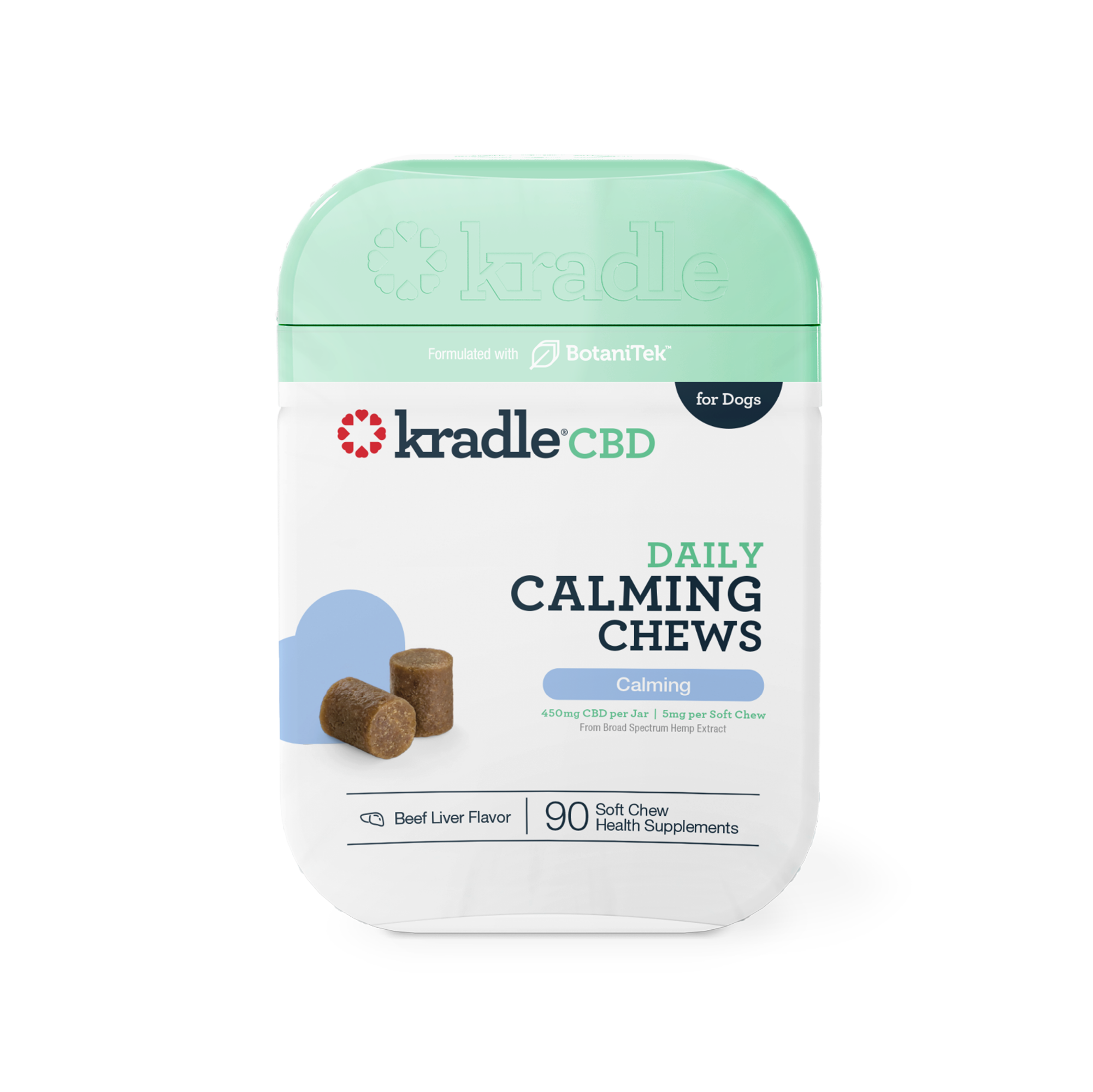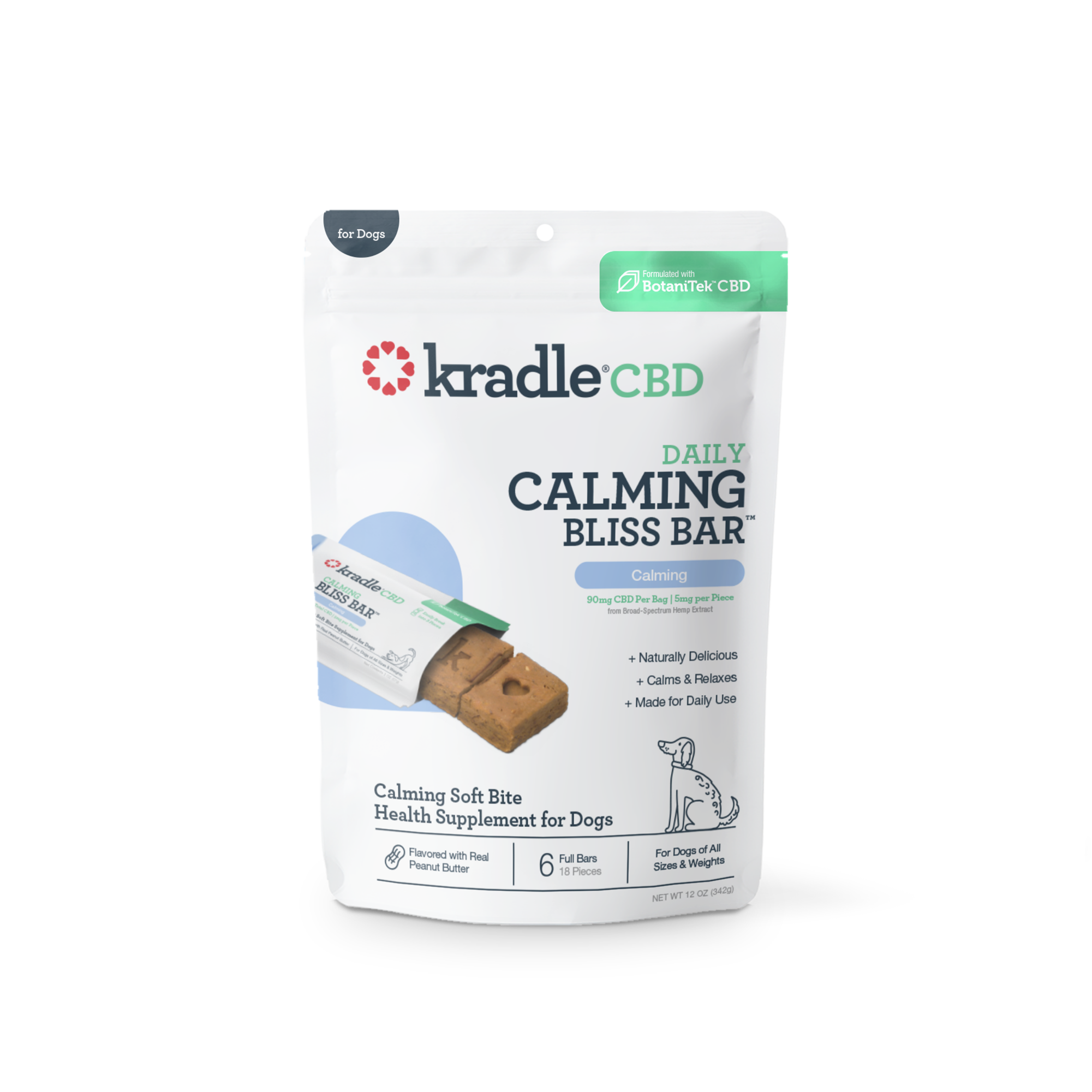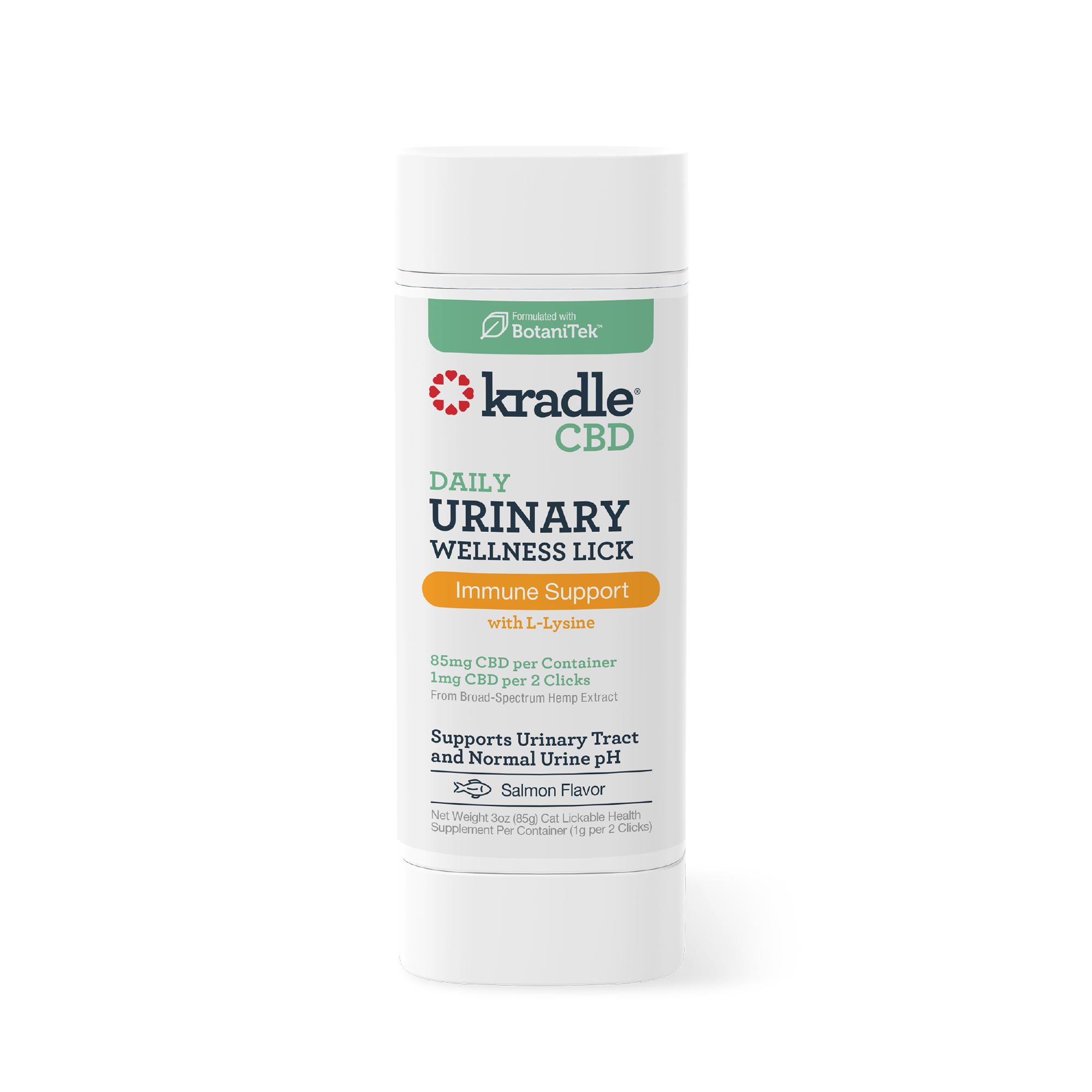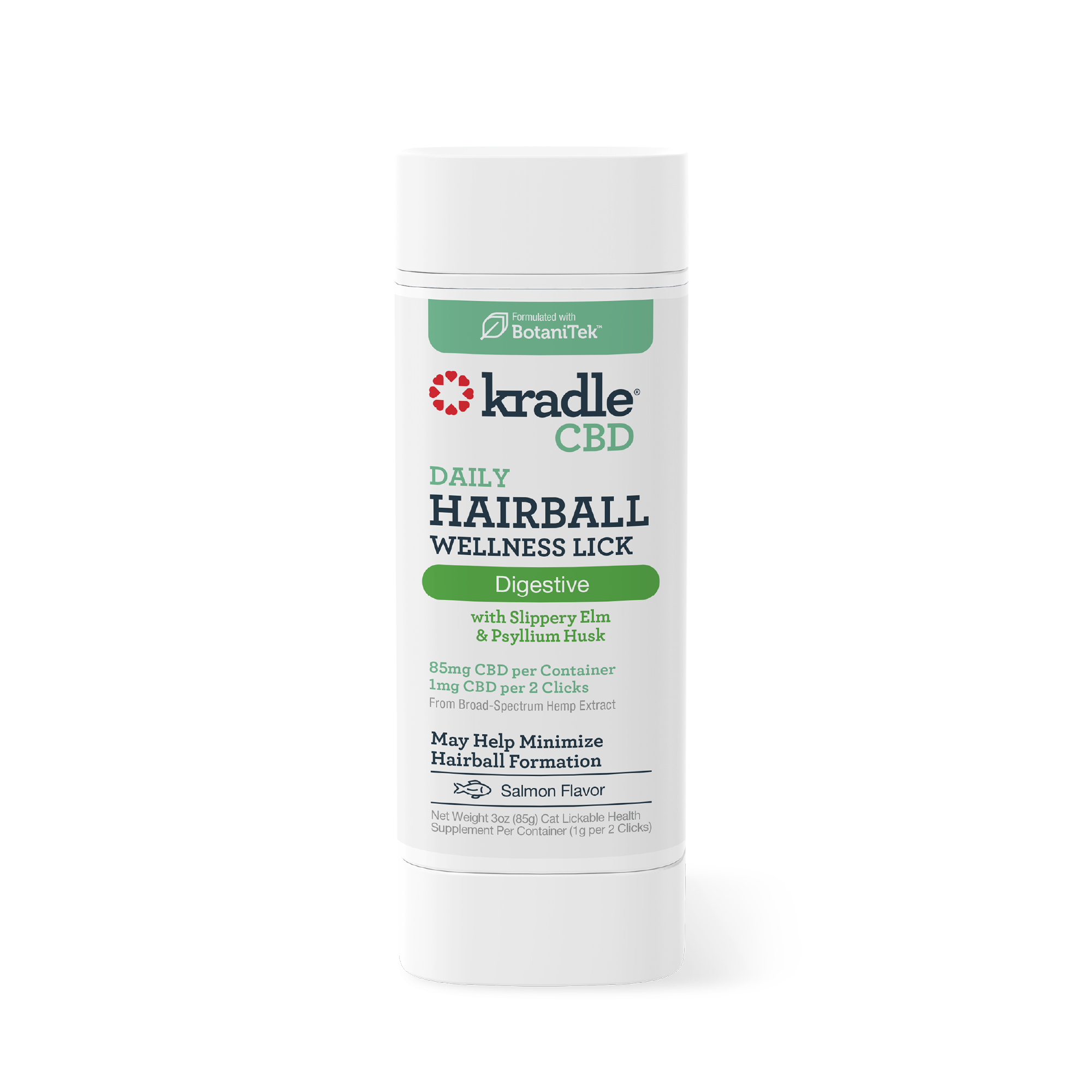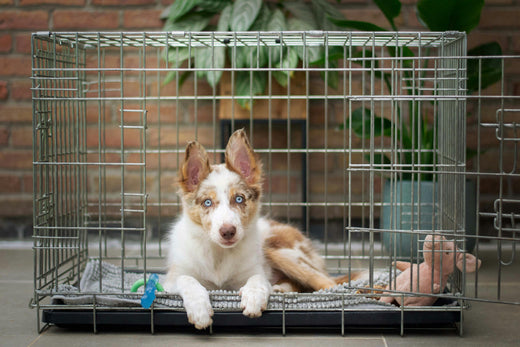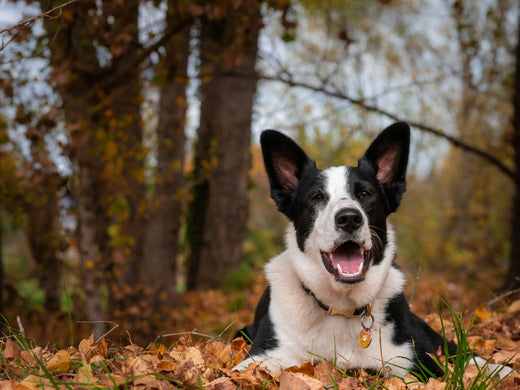
Kradle’s Tips for a Tick Free Fall
With the arrival of cooler fall weather, many pet owners believe that the concerns about flea and tick control for dogs are over. Unfortunately, the changing of the leaves isn't a sign that you can let down your guard. Although we often think of summer as tick season, autumn is actually prime time for the pests. Fortunately, there is a lot you can do to reduce the risk of ticks on dogs. In this post, we'll show you why autumn is critical for flea and tick prevention for dogs and discuss how to protect your dog and keep their coat and skin healthy throughout the season.
Why It's Important to Keep Your Dog Safe from Ticks and Fleas
Before getting into flea and tick treatment for dogs and prevention strategies, it's important to understand why tick control is important in the first place. Tick bites on dogs can lead to diseases, such as Lyme disease, ehrlichiosis and anaplasmosis. These diseases can cause unpleasant symptoms, such as fatigue, fever, loss of appetite, joint swelling and skin irritation and lead to long-term health issues, such as chronic pain. Fleas can also cause a host of health problems for dogs, from skin irritations to anemia to tapeworm infections.
Fleas and ticks can cause problems for you, too. In your home, fleas can quickly cause an infestation that may be costly to deal with. Plus, many diseases carried by fleas and ticks are transmissible to humans.
Where and When Is Your Dog at Risk of Ticks?
Ticks are often found in wooded areas and tall, grassy fields. Areas that are home to wildlife can also be tick hotspots. The pests aren't just a suburban and rural problem, either. Ticks are often found in urban parks as well.
Although the majority of ticks are most active in the spring and summer, some species peak in the fall. The cooler temperature can increase tick activity and cause changes in wildlife movements that may increase your dog's risk of tick exposure. Throughout the year, ticks are generally most active during the early morning and late afternoon.
What Do Ticks Look Like on Dogs?
From a distance, a tick on a dog may resemble a wart or bump. When you look closely, you'll be able to see the tick's reddish-brown or black body and their eight legs.
Ticks may bite dogs anywhere, but certain regions of the body are more prone to the pests. When checking your dog for ticks, be sure to look closely at their ears, under their collars, in their armpits, between their toes and around their tails.
How to Prevent Ticks
To reduce the risk of ticks, follow these tips:
- Groom your dog regularly: Frequent brushing and baths can help you spot ticks and remove any ticks that are in their fur but not yet attached to their skin.
- Inspect your dog regularly: Check your dog over anytime that you're in a tick hotspot.
- Maintain your lawn: Remove debris from your yard, mow your lawn regularly and keep bushes and trees trimmed to cut down on hiding spots for ticks.
- Try natural remedies for tick prevention: Diluted cedar oil, neem oil and lavender oil may act as a natural tick repellent. Some people also use apple cider vinegar for natural tick prevention.
- Use flea and tick medicine for dogs: Spot treatments like Frontline or Advantix can help prevent both ticks and fleas. Your vet can recommend the best flea and tick prevention for dogs based on your pet's knees.
- Utilize other flea and tick products: Flea collars and flea and tick prevention shampoos can be beneficial, especially for dogs that are unable to be treated with flea and tick medicine due to medical conditions.
Treatment for Ticks
If you spot a tick on your dog, take action immediately. Here's how to remove a tick from a dog:
- Use a cotton ball to dab a small amount of rubbing alcohol onto the tick.
- Grab the body of the tick with a pair of tweezers. Be certain not to grasp the head or a leg.
- Once you have a firm hold on the tick's body, pull it out with a straight, smooth motion. Avoid twisting, as some of the tick may break off.
- Put the tick in rubbing alcohol to kill it.
- Apply a disinfectant and any topical treatments that your vet recommends to your dog's skin.
- Comb out your pet's coat with a flea and tick comb to remove any unattached ticks.
Your vet can also provide you with tips on how to remove ticks from dogs. After the process is complete, vacuum your home thoroughly and launder any bedding that your dog has slept on. Keep a close eye on your pet in the coming days. If your dog shows any signs of tick-borne illnesses, such as fatigue or loss of appetite, see your veterinarian.
Healthy Coat and Skin with Kradle
Flea and tick prevention is just one part of skin care for dogs. Promoting healthy skin can reduce the risk of dryness and irritation that can lead to itching and discomfort. Healthy skin may also be more resilient to tick infestations.
Ask your vet about how best to care for your dog's skin. You may also wish to consider Kradle's Skin Recovery Spray and Skin Recovery Chews. Featuring broad-spectrum CBD and our BontaniTek blend of natural ingredients, these products may help maintain the health of your dog's skin and coat.
Protect your Pet This Fall
Although autumn does bring the risk of ticks, you can protect your pooch from pests through regular skin checks and the right flea and tick prevention products and remedies. When you do spot a tick on your dog, take action quickly to remove it. This can also reduce their risk of developing tick-borne illnesses. Start incorporating the above flea prevention tips today and be sure to see your vet regularly for more advice and help on keeping your dog's skin and coat healthy throughout the autumn season and beyond. After all, autumn walks can be beautiful, as long as you don't let fleas and ticks be the unexpected guests that spoil the fun.

